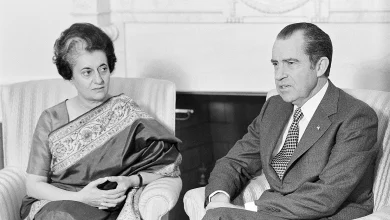
The James Bond franchise has captivated audiences for decades with its thrilling spy adventures and iconic characters. One recurring element that has intrigued fans is the portrayal of Bond villains as incredibly wealthy individuals. From megalomaniacal tycoons to eccentric billionaires, these villains possess immense resources that challenge the resourcefulness of our beloved secret agent. This article explores the reasons behind the tradition of depicting Bond villains as vastly wealthy and examines whether it is merely a clever marketing gimmick or if it serves a deeper purpose within the franchise.
Key Takeaways
- Wealthy Bond villains symbolize power and pose formidable challenges to James Bond, elevating the stakes in the films.
- The portrayal of wealthy villains reflects historical and societal obsessions with wealth and power dynamics, particularly during the Cold War era.
- Cinematic spectacle and the allure of extravagant lifestyles contribute to the inclusion of wealthy villains in the franchise.
- Real-world influences inspire the depiction of Bond villains, although they are not direct representations of specific individuals.
- The portrayal of wealthy villains can be viewed as a clever marketing strategy, attracting audiences with the glamour and grandeur associated with the Bond franchise.
The Bond Villain Archetype: A Symbol of Power
At the core of the Bond villain trope lies the desire to create a formidable adversary that can challenge the resourcefulness and skills of our beloved secret agent. By portraying villains as exceedingly wealthy, the creators heighten the stakes and emphasize the gravity of the threat Bond faces. Money becomes a symbol of power, enabling villains to execute their nefarious plans with seemingly limitless resources at their disposal.
Historical Context: Reflecting Societal Obsessions
The portrayal of wealthy villains in James Bond films is not a recent phenomenon. It dates back to the franchise’s inception in the early 1960s, a time when economic inequality was a prevalent topic of discussion. The Cold War era, characterized by superpowers vying for supremacy, fueled the fascination with wealth as a source of power and control. Bond’s adversaries became reflections of the societal obsessions and fears surrounding wealth disparity, emphasizing the dangers of unchecked wealth and influence.
Cinematic Spectacle: Indulging in Extravagance
Another factor that contributes to the depiction of wealthy villains is the allure of cinematic spectacle. Bond movies are known for their opulent sets, luxurious lifestyles, and extravagant action sequences. By featuring villains with immense wealth, the films allow audiences to indulge in a world of extravagance and grandeur that goes beyond the realms of everyday life. The larger-than-life villains with their lavish hideouts, high-tech gadgets, and eccentric tastes create a captivating contrast to Bond’s suave but more modest existence.
Plot Development: Catalysts for Conflict
The wealth of Bond villains often serves as a catalyst for the conflict between Bond and his adversaries. Their immense resources enable them to finance elaborate schemes and dangerous enterprises, making them formidable opponents. This dynamic heightens the suspense and adds complexity to the plot, as Bond must navigate a treacherous landscape of intrigue and deceit. The wealth of the villains becomes a central element that propels the narrative forward, providing the means for elaborate plots and thrilling showdowns.
Real-World Parallels: Inspired by True Influences
While the Bond franchise thrives on fictional narratives, the portrayal of wealthy villains also draws inspiration from real-world influences. History is replete with examples of individuals who have leveraged their wealth to amass power and influence, sometimes even becoming infamous figures. The Bond films tap into these parallels, reflecting the fascination with larger-than-life personalities whose wealth and ambition drive their actions. By amalgamating fictional and real-world traits, the villains become multi-dimensional characters that resonate with audiences.
Marketing Strategy: Attracting Audiences
Beyond narrative considerations, the depiction of wealthy villains can indeed be viewed as a clever marketing strategy. Audiences are inherently captivated by stories that feature characters living extravagant lives and possessing immense wealth. The inclusion of wealthy villains adds an aspirational element to the films, allowing viewers to momentarily escape into a world of privilege and excess. This allure can attract a broader audience, enticed by the glamour and grandeur associated with the Bond franchise.
FAQ
1. Why do James Bond villains always have immense wealth?
The portrayal of James Bond villains with immense wealth serves multiple purposes within the Bond franchise. Firstly, it symbolizes power and establishes the villains as formidable adversaries for Bond to overcome. Their wealth enables them to finance elaborate schemes and acquire advanced technology, giving them an edge in their pursuit of global domination or personal vendettas. By presenting villains with vast resources, the filmmakers emphasize the gravity of the threat Bond faces and create high-stakes scenarios that captivate audiences.
Secondly, the depiction of wealthy villains reflects historical and societal obsessions. Throughout history, the accumulation of wealth has often been associated with power and control. Bond movies, originating during the Cold War era, tapped into the fears and discussions surrounding economic inequality. By portraying villains as wealthy individuals, the films highlighted the dangers of unchecked wealth and the potential for it to be wielded for nefarious purposes.
Lastly, the inclusion of wealthy villains adds to the cinematic spectacle of the Bond franchise. Audiences are drawn to the world of extravagance and grandeur depicted in these films. The villains’ opulent hideouts, luxurious lifestyles, and eccentric tastes provide a captivating contrast to Bond’s more modest existence. This indulgence in extravagant settings and characters allows viewers to escape into a realm of high-end luxury and immerse themselves in a larger-than-life cinematic experience.
2. Do James Bond villains always represent real-world figures?
While James Bond villains draw inspiration from real-world influences, they are not direct representations of specific individuals. The Bond franchise often incorporates elements from history and contemporary events to add depth and relevance to its narratives. The villains may possess certain traits or characteristics reminiscent of real-world figures who have used their wealth and ambition to amass power and influence.
However, the portrayal of Bond villains is primarily a fictional construct, blending fictional traits with real-world parallels. This approach allows the filmmakers to create multi-dimensional characters that resonate with audiences while maintaining creative freedom. By amalgamating various influences, the Bond villains become unique entities within the franchise, embodying a blend of archetypal traits and fictionalized characteristics that make them compelling and memorable adversaries for James Bond.
It is worth noting that while real-world influences inspire the portrayal of Bond villains, the primary goal is to entertain and engage the audience within the context of the film’s narrative. The villains serve as powerful adversaries to challenge Bond’s skills and resourcefulness, providing a thrilling and suspenseful experience for moviegoers.
3. Is the portrayal of wealthy villains in James Bond films a reflection of society’s obsession with wealth?
The portrayal of wealthy villains in James Bond films can indeed be seen as a reflection of society’s fascination with wealth and its associations with power and control. Throughout history, the accumulation of wealth has been a topic of intrigue and a symbol of status and influence. The Bond franchise taps into this cultural fascination, crafting villains who possess immense wealth to emphasize their ability to manipulate and shape the world according to their desires.
Additionally, the depiction of wealthy villains aligns with societal discussions surrounding economic inequality and the dangers of unchecked wealth. The films explore the potential consequences when individuals with significant resources use their wealth for malicious purposes. By highlighting the dangers of such imbalance and the potential for exploitation, the Bond franchise provides a thought-provoking narrative that resonates with audiences who are cognizant of the impact of wealth and power dynamics in the real world.
Moreover, the inclusion of wealthy villains adds an aspirational element to the films. Audiences are captivated by stories that feature characters living extravagant lives, and the Bond franchise satisfies this desire by showcasing opulence and grandeur. The luxurious lifestyles of the villains, their lavish hideouts, and eccentric tastes create a world of privilege and excess that enthralls viewers, even if only temporarily. The allure of wealth and the fantasy of indulging in a life of luxury contribute to the enduring appeal of the Bond films.
Conclusion
The tradition of depicting James Bond villains as vastly wealthy individuals serves multiple purposes within the franchise. It symbolizes power, reflects historical and societal obsessions, contributes to the cinematic spectacle, fuels plot development, draws inspiration from real-world influences, and acts as a marketing tactic to engage audiences. The immense wealth of the villains creates captivating adversaries for Bond, challenging him in ways that highlight his resourcefulness and skills.
The portrayal of wealthy villains also taps into the fascination with wealth and its associations with power and control. It allows audiences to momentarily indulge in a world of opulence and grandeur, providing an aspirational escape from everyday life. While the inclusion of wealthy villains may be seen as a marketing gimmick, it serves a deeper purpose in enhancing the narrative and creating memorable characters that resonate with audiences.
Ultimately, the presence of immensely wealthy villains in the James Bond franchise adds depth, excitement, and an element of grandiosity to the films. It showcases the allure and dangers associated with vast wealth, contributing to the enduring appeal of the iconic spy series.








